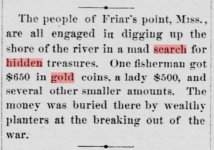The Clifton clarion. (Clifton, Graham County, A.T., Ariz.), 19 June 1889.

https://chroniclingamerica.loc.gov/...xt=&andtext=&dateFilterType=yearRange&page=10
it's a Mad, Mad, Mad, Mad World ?
Follow along with the video below to see how to install our site as a web app on your home screen.
Note: This feature may not be available in some browsers.
